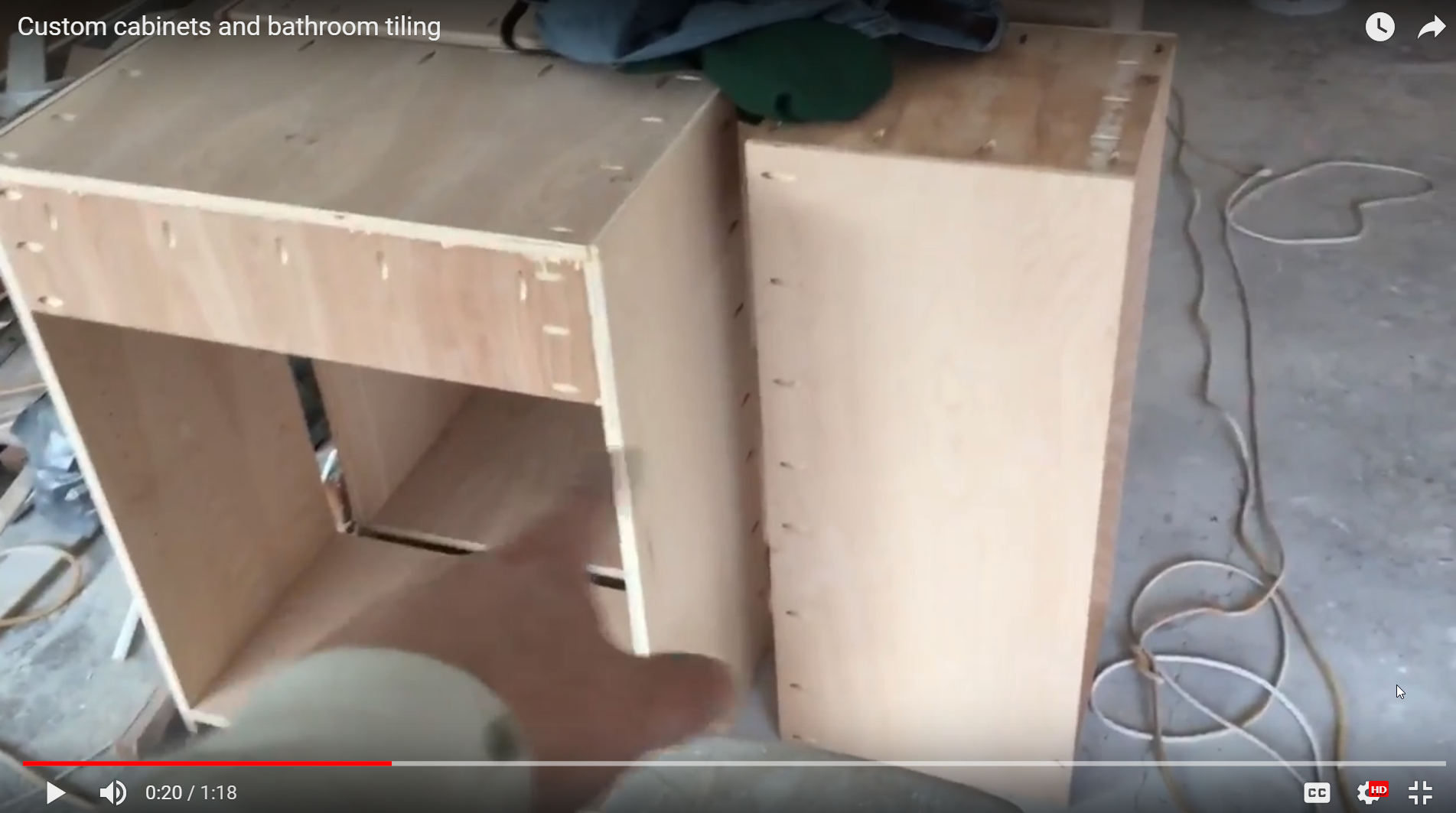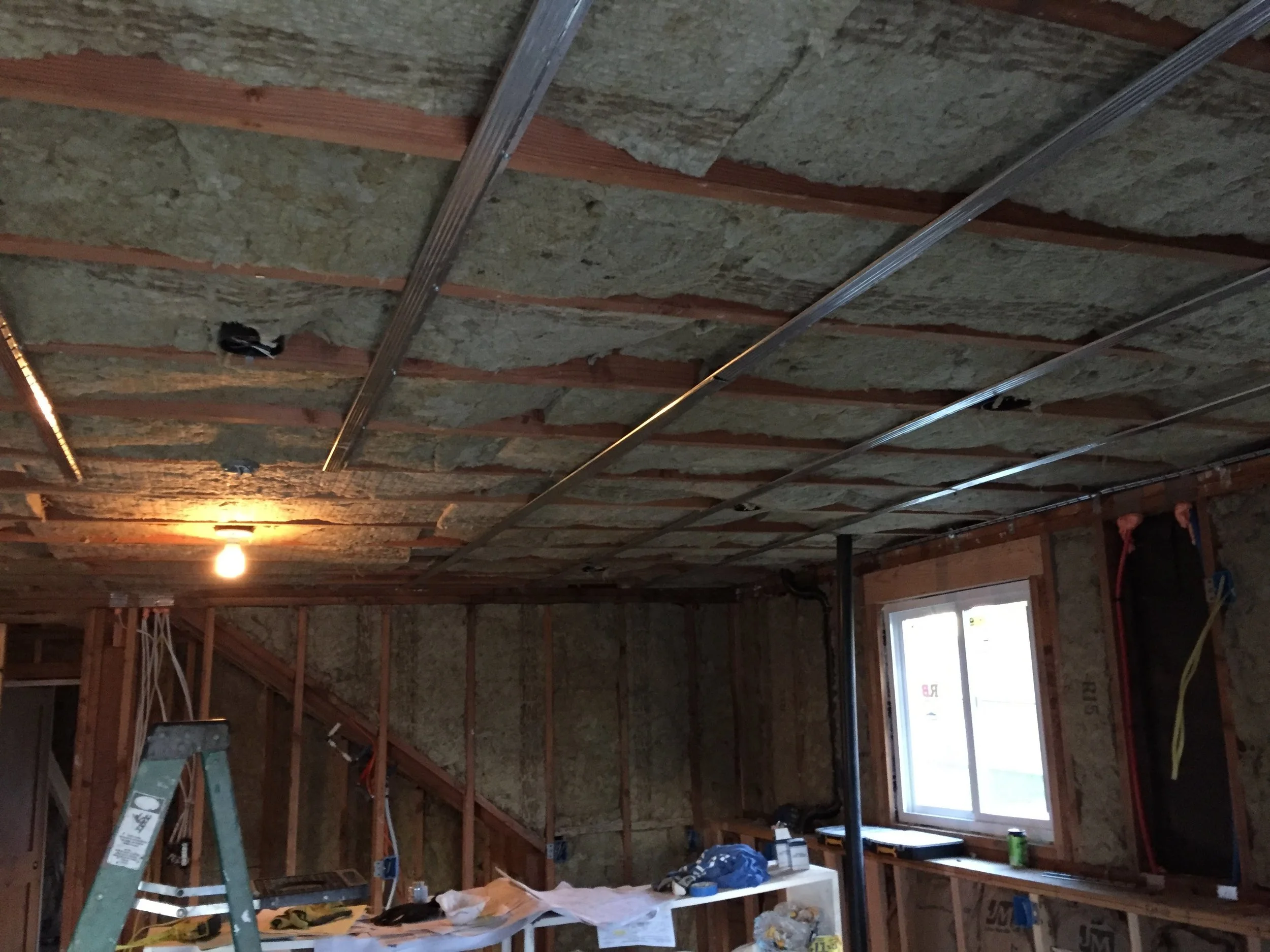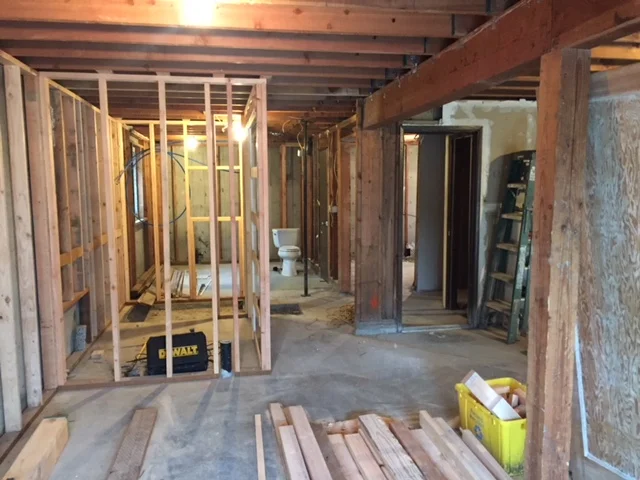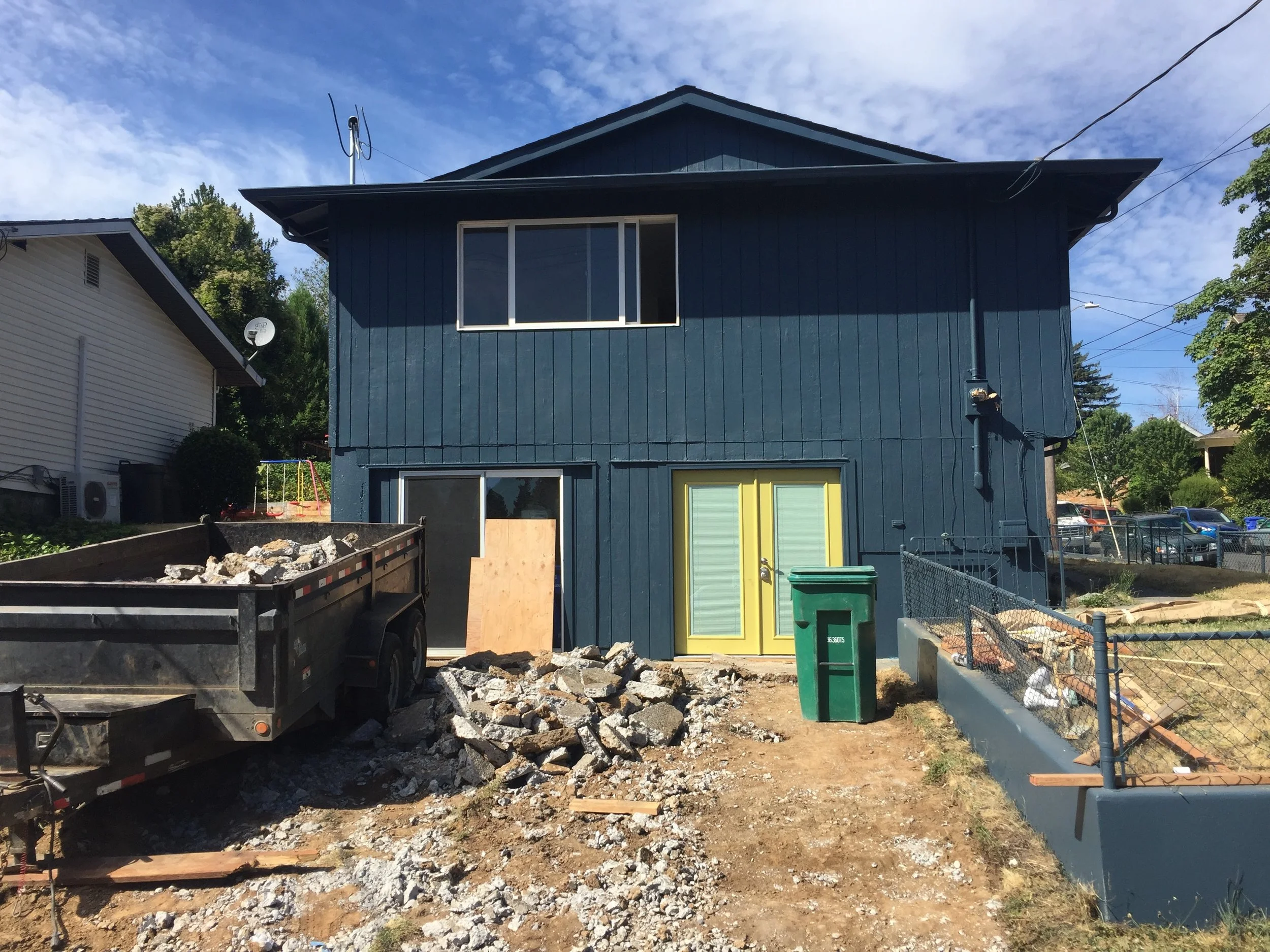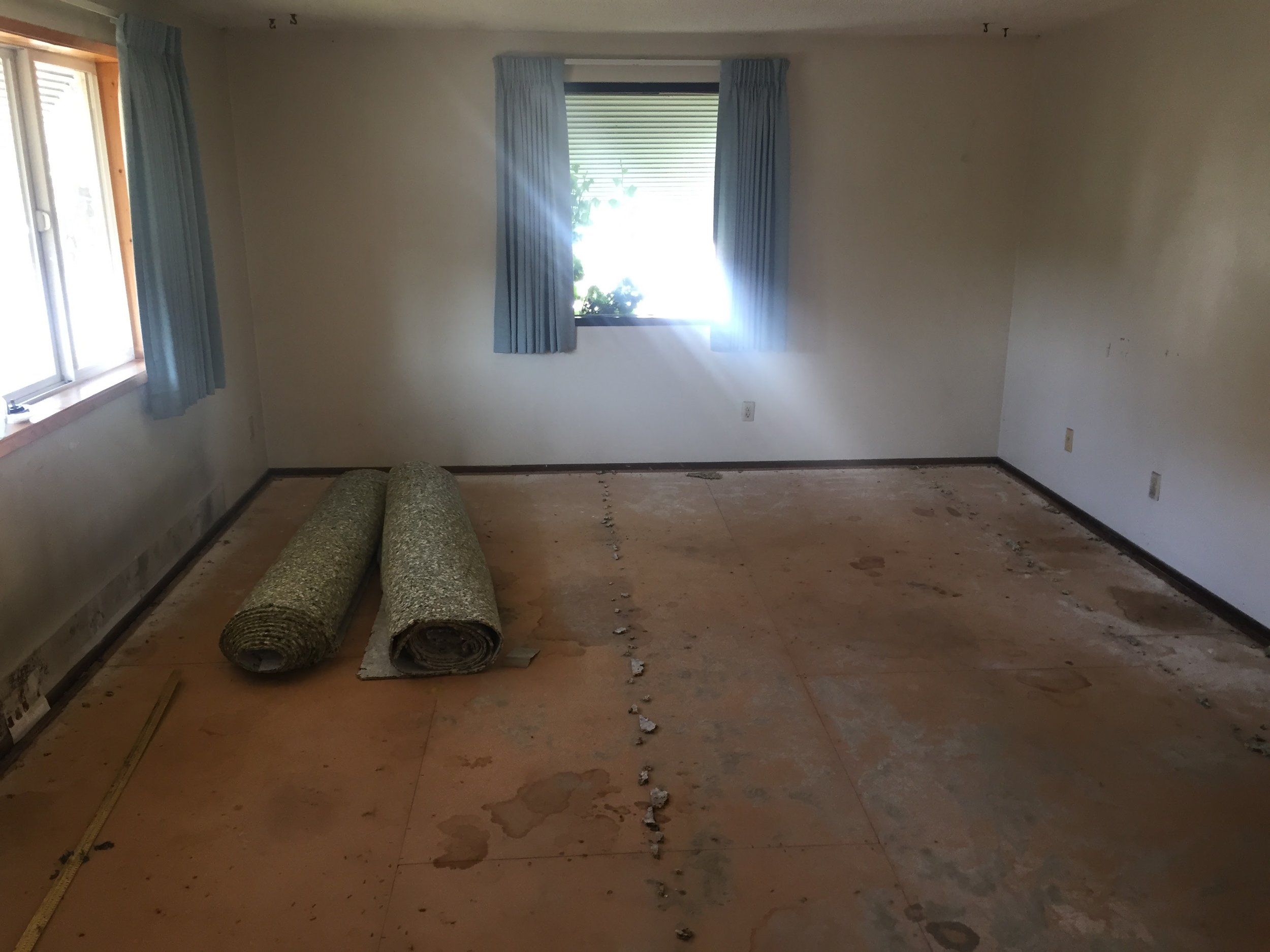Hi there and welcome to the ADU Odyssey blog, where I chronicle the entire process of financing, developing, designing, and building an ADU.
Finally, the ADU is done! It was a 5-month long project, and cost me $76K out of pocket. I estimate that my sweat equity was $24K, so my total project cost was $100K.
The basement/garage conversion ADU is nearly done.
I had an initial Certificate of Occupancy inspection, and it didn't pass. There was a minor change required for the plumbing: a drain needed to be added from the water heater. And, the egress window was obstructed from opening the full way.
The ADU is starting to show signs of life, with finish work giving it the appearance of an actually home. I laid the flooring, which took about 30 hours. We used luxury vinyl planking.
We finished the painting, and jumped into custom cabinet construction. I hired a builder to make them for $10K. I could have gotten them from Lowes/Home Depot for $8K, but there were some odd configurations and matching cabinet doors that I needed to do elsewhere in the ADU, so it made sense for me to go with custom cabinets this time.
I hired out the drywall, so that phase only took a couple weeks. Realistically, it would have taken me 2-3 months if I tried to do it on my own.
Next, I moved on to painting. Painting also went really fast.
Drywalling takes a lot of time, is challenging to do by yourself, and I've been told it gets old quickly. I also determined that the cost saving of me doing the work myself were not worth it in terms of the lost rental income.
After watching the drywall crew work for the last week, I'm glad I hired this job out.
The rough in electric and plumbing are done. The next step was to install wall insulation, ceiling sound insulation, and acoustic resilient channel.
The rough in electric work for the basement ADU is complete. This is a video walk through of wiring, oulets, and switches. Next up, rough in plumbing work.
We've started the framing of the basement ADU.
I'm doing some of the work myself, and getting a lot of help and guidance from a professional builder. He's actually doing a lot of framing directly. I'm finding that MOST of the framing is not at all straight forward. If it were just straight walls, that would be one thing.
If you can only insulate one of the six walls in a box house, the most important one is the ceiling/attic. This wall is where a house loses the most heat energy in the winter months.
On a rental unit, there is not necessarily much financial motivation to insulate well, because the tenant is generally responsible for the bills. However, weatherizing a home is always a good thing to do.
Project managing the development of an ADU is complicated and overwhelming. In this case, I am juggling concrete cutters, concrete contractors (two different specialties), plumbers, electricians, painters, a builder, and two sets of concurrent city inspectors. While I get input from each of them, I must also coordinate their input with the designer's feedback. The following post is a snapshot into the complexity of managing this project.
The house is now painted, and it's a big improvement. Amazing what paint can do.
When lay people view 2D floorplans, it can challenging to understand what a space is going to look like. Fortunately, most CAD programs now have built in tools to help designers spit out 3D visualizations of what a place is actually going to look like when it's complete. Here's some snapshots of the great room layout for the basement conversion ADU.
Things are moving along fast. Very fast. 3 months ahead of schedule.
Let me explain. ADU permits typically take 10-12 weeks. But, sometimes, when you're converting a pre-existing structure to ADU, the City of Portland can actually do all of the permitting the same day. That's what happened in this case. Granted, it took 5 hours to speak with all of the different bureaus, but I walked away at the end of the day with a permit in hand. Here's the official online record of the permit.
The upstairs renovation continues this week, with the installation of ductless minisplit units, electric panel installation, and the filling of a 30-yard dumpster with construction waste.
This week is a blur of activity with the renovation. Demolition, hauling waste, building a new structural wall for a washer/dryer, plumbing, electrical, drywall, interior painting, insulation, HVAC installation, and more.
There's a lot of different actitivities happening simultaneously. I'm serving as general contractor/project manager, ensuring that everything is running on schedule. I'm leaning heavily on the various tradespeople to guide the work, as much of the specifics of the process is new to me.
This is a big week. A lot is happening at the house.
One significant update is that the land use adjustment was granted. Here is the official letter from the City of Portland.
I took posession of the house last week, and have started some demolition. This involves removing the carpet, awnings, trim.
My first priority is to renovate the upstairs of the house to get it ready to rent out. This is the priority because as soon as the upstairs is ready to be rented out, the rental income should roughly cover the mortgage. So, at that point, I can breathe easy, as I won't be covering the mortgage.
This week, I took official ownership of the house. I also got notice from the City that my initial adjustment application wasn't complete, and needed some modifications.
Namely, I had to revise a reference that I made to setbacks to instead be about a parking standard.
An adjustment is synonymous with the term "variance". In Portland, Oregon, when you apply for an adjustment, you're applying for an exemption for the standard planning/zoning codes that apply to the type of permitted work you're seeking to do.
We are putting together the documentation for an adjustment, also commonly known as a variance. This means the ADU application is a process that I haven't personally dealt with before. It's effectively a 'conditional use' application at this point, where there's a chance that I won't be granted permission to build the ADU as I'd like. But, based on conversations with City officials, I'm fairly confident that permission will be granted once my application is reviewed.
This house featured a ground level 2-car attached garage. Here's what is it looks like in it's current state. Eventually, this will become the great room of an ADU.
One of the very first steps anyone should take when determing whether an ADU is going to be even possible for a given property, is to visit the building permitting office.
This is my 7:30am visit to the local permitting office in Portland. I left a mere 5 hours later after getting most of my questions answered by a variety of different municipal bureaus.
I don't think of myself as a snob, but I gotta be honest and say that I cringe just a bit when I look at the house I just bought.
So, funny story... I had been planning on making an investment in a property and building my second ADU. I was looking for a beautiful house someplace in Portland. Then the world had other ideas for me.




